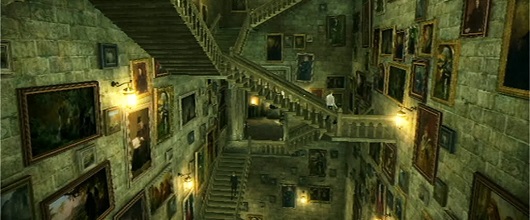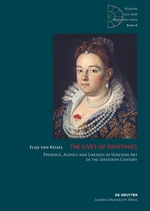New book shows people in 16th-century Venice treated paintings as if alive

A new book by a University of St Andrews academic sheds light on why people in 16th-century Venice kissed and talked with their art.
The Lives of Paintings: Presence, Agency, and Likeness in Venetian Art of the Sixteenth Century, written by Dr Elsje van Kessel, a lecturer in Art History at the University of St Andrews, presents a range of examples of apparently living paintings and the power Renaissance Venetians believed them to possess.
While many are familiar with the living portraits that line the walls of J.K. Rowling’s Hogwarts, such stories are not merely imaginary. Van Kessel found evidence that paintings in Venice attended dinner parties, were believed to heal the sick, made money, and became involved in love affairs.
A major monograph has resulted in new insights on why human beings attribute emotions and intentions to lifeless artefacts. The examination of paintings by such major artists as Giorgione and Titian revealed that the lifelikeness of their styles played an important role in the power of these works. Dr Van Kessel’s research also shows that religious and romantic rituals of the time allowed paintings to take the place of the people they depicted in Venetian society.
The research, partly conducted in the archives and libraries of Venice, has uncovered a wealth of little-known documents recording people’s responses to paintings in their day-to-day lives. A particularly important find was a set of letters written by a Venetian nobleman to the grand duchess of Tuscany, Bianca Capello. The nobleman, who owned a painted portrait of the much-admired woman, recorded in his letters how he treated the portrait as if it were the grand duchess herself.
 Dr Van Kessel, who has been studying Venetian 16th-century painting since 2006 when she began her doctoral project at Leiden University in the Netherlands, said: “The lifelikeness of paintings was one of their main measures of success. Oil painting was the most advanced imaging technology of the Renaissance. Responses to it were not too different from the way we react to VR now.”
Dr Van Kessel, who has been studying Venetian 16th-century painting since 2006 when she began her doctoral project at Leiden University in the Netherlands, said: “The lifelikeness of paintings was one of their main measures of success. Oil painting was the most advanced imaging technology of the Renaissance. Responses to it were not too different from the way we react to VR now.”
Besides shedding light on 16th-century Venice, the book also helps to understand why objects, in any place or time, can have such a profound impact on humans.
Research for this book was supported by the Netherlands Organisation for Scientific Research and the Carnegie Trust for the Universities of Scotland.
Background information
Dr Elsje van Kessel is available for interview via the Communications Office, contacts below.
St Andrews has an in-house ISDN line for radio and a Globelynx camera for TV interviews. To arrange an interview please contact the Communications Office in the first instance.
The Lives of Paintings: Presence, Agency, and Likeness in Venetian Art of the Sixteenth Century is published by De Gruyter. Visit De Gruyter’s webpage for more details on the book and Dr Elsje van Kessel’s wepage for more information on the author.
Issued by the University of St Andrews Communications Office. Contact Christine Tudhope on 01334 467 320/07526 624 243 or [email protected].
Category Research